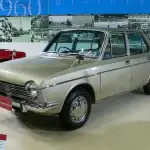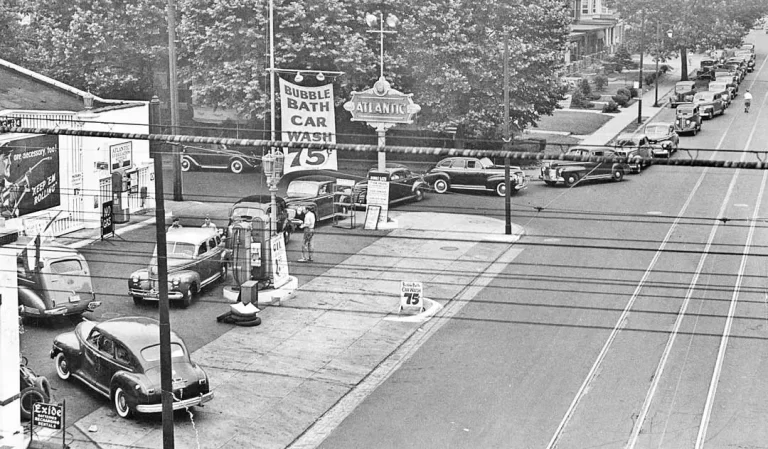
In the world of automobiles, the quest for safety and performance has driven countless innovations. Among the unsung heroes of this evolution are brake rotors.
These circular, unassuming components play a pivotal role in bringing vehicles to a halt, and their history is a testament to the relentless pursuit of stopping power, safety, and efficiency. Join us on a journey through time as we explore the fascinating history of brake rotors.
The Early Days of Mechanical Brakes and Drum Rotors
Our journey begins in the early days of automotive history when the concept of braking was a far cry from today’s advanced systems. Mechanical brakes were the norm, relying on external shoe brakes and drum rotors. These early drum rotors, resembling the components found in today’s lawnmowers, were simple yet effective for their time.
During the late 19th and early 20th centuries, drum brakes were the industry standard. As the name suggests, they utilized a drum-shaped rotor housing that encased brake shoes. When drivers applied the brakes, friction between the shoes and the inside of the drum rotor generated the stopping force. While functional, these early drum rotors had their limitations.
From Drums to Discs
The true revolution in braking technology occurred with the introduction of disc brakes. This pivotal moment reshaped the course of automotive history, setting the stage for the advanced brake systems we have today. Disc brakes offered several advantages over their drum counterparts, including superior cooling and reduced fade under heavy use.
In the 1950s and 1960s, automotive engineers recognized the potential of disc brakes and began incorporating them into production vehicles. These early disc rotors were a far cry from today’s high-performance variants, but they marked a significant step forward in braking technology.
Innovations in Brake Rotor Materials and Design
As the automotive industry continued to evolve, so did the materials and designs used in brake rotors. Cast iron, a material known for its durability and heat tolerance, was initially used for disc rotors. However, the pursuit of enhanced performance led to the exploration of new materials, including aluminum alloys and composite materials.
In addition to material advancements, engineers experimented with various rotor designs. Ventilation became a crucial consideration, as it allowed for more effective heat dissipation. Slots and holes were introduced to improve braking performance and reduce the risk of brake fade under heavy loads. These innovations collectively led to improved rotor efficiency and longevity.
High-Performance Brake Rotors in Racing and Sports Cars
High-performance vehicles, such as racing and sports cars, played a pivotal role in shaping the development of brake rotors. These machines demanded more from their braking systems, pushing the boundaries of what was possible. Today, you can purchase performance rotors and brakes to improve the usage of just about any top vehicle.
Iconic racing cars, including the Porsche 917 and the McLaren F1, first showcased the potential of advanced rotor technology. Carbon-ceramic rotors, a significant leap forward in terms of weight reduction and heat resistance, became the norm in top-tier racing vehicles. The lessons learned on the racetrack filtered down to consumer vehicles, influencing the design and performance of everyday brake rotors.
Brake Rotors in Modern Cars
Fast forward to the modern era, and brake rotors have become integral components of advanced safety systems. Antilock Brake Systems (ABS) and Electronic Brakeforce Distribution (EBD) rely on precise control of brake rotor function to enhance vehicle stability and control during braking.
Materials and manufacturing processes have also evolved, with advanced cast iron alloys and composite materials being used to create rotors that are not only durable but also lightweight. Computer-aided design has further optimized rotor efficiency, ensuring that modern braking systems deliver reliable performance.
Looking Ahead at Potential Future Innovations in Brake Rotor Technology
As we stand at the precipice of a new automotive era, brake rotor technology continues to evolve. Researchers and engineers are exploring innovative solutions to improve efficiency and reduce environmental impact. For example, consider:
Smart Rotors
Imagine brake rotors equipped with sensors and AI technology that can monitor their condition in real time. These smart rotors can provide data on wear and performance, allowing for predictive maintenance and improved safety.
Regenerative Braking
With the rise of electric vehicles, regenerative braking systems are gaining prominence. These systems harness kinetic energy during braking and convert it into electrical energy to recharge the vehicle’s batteries. The future may see brake rotors designed specifically to optimize regenerative braking efficiency.
Sustainable Materials

In an environmentally conscious world, sustainable materials are becoming increasingly important. Researchers are exploring materials derived from renewable sources or recycled materials to create eco-friendly brake rotors that maintain performance while reducing the carbon footprint.
The history of brake rotors is a testament to the relentless pursuit of stopping power, safety, and efficiency in the world of automobiles. From humble drum rotors to advanced carbon-ceramic variants, these unassuming circular components have been pivotal in shaping automotive history.
The legacy of brake rotors is a story of innovation that has made our journeys on the road safer, smoother, and more reliable than ever before. As automotive technology continues to progress, one can only imagine the exciting developments that lie ahead on the road of evolution.

















